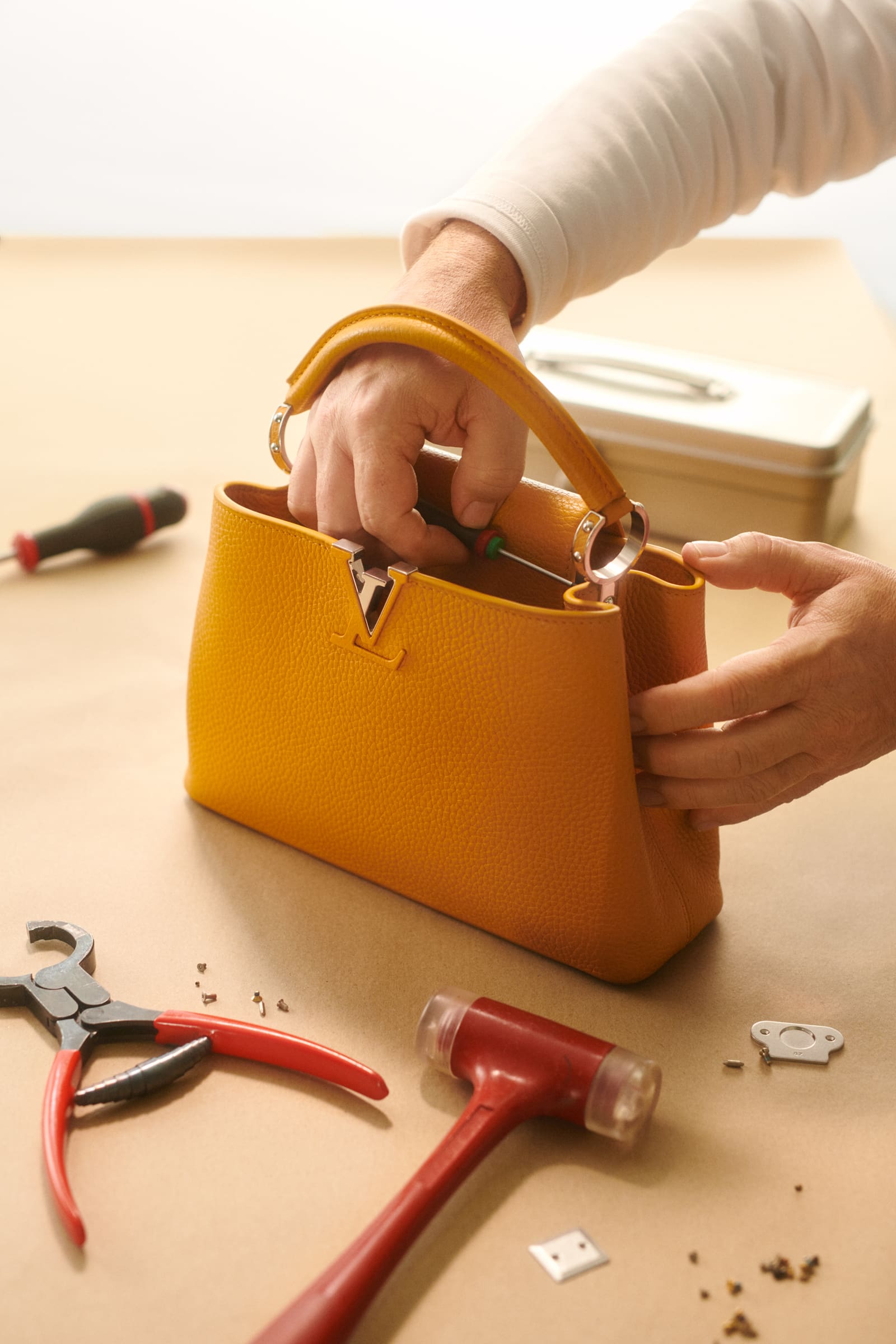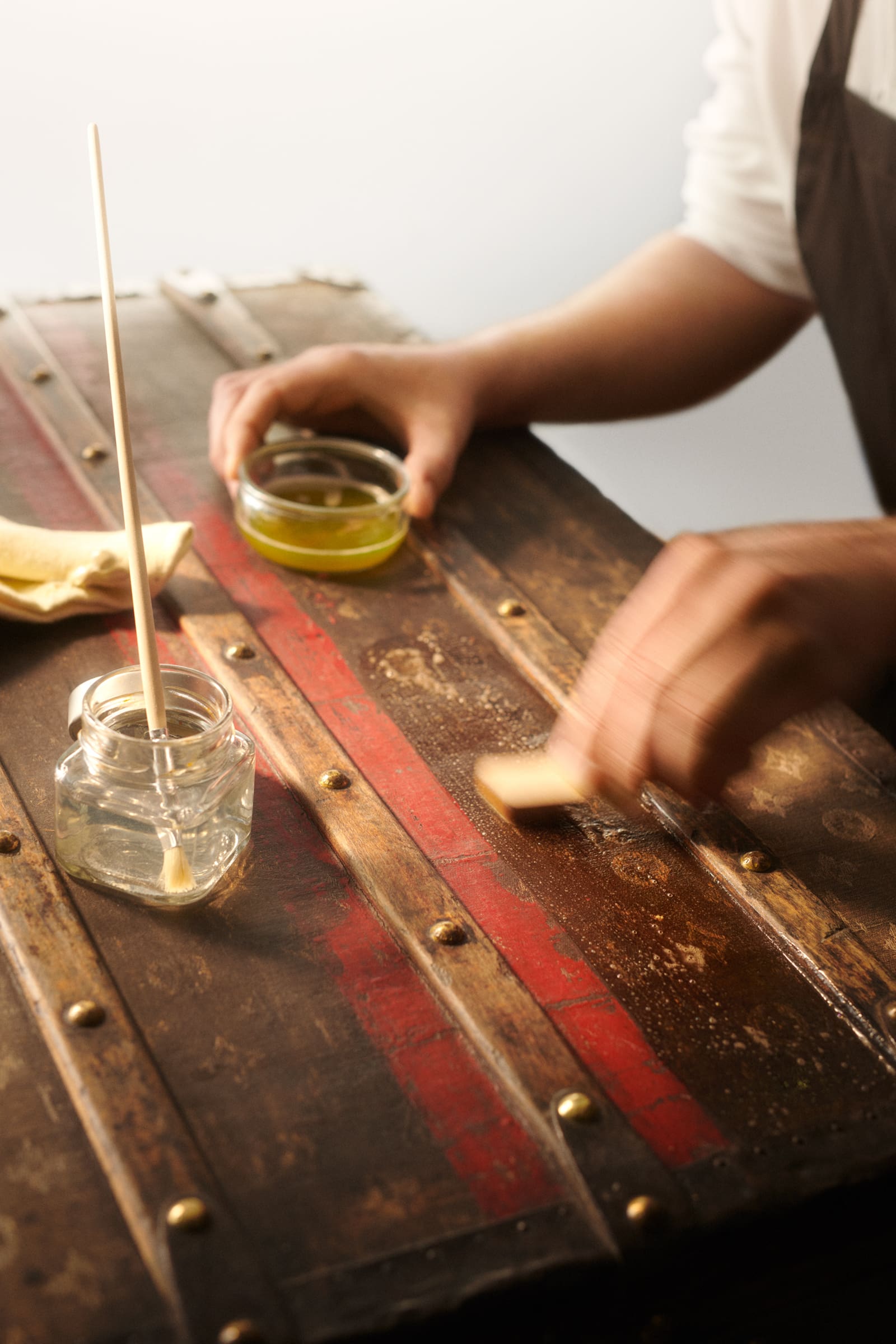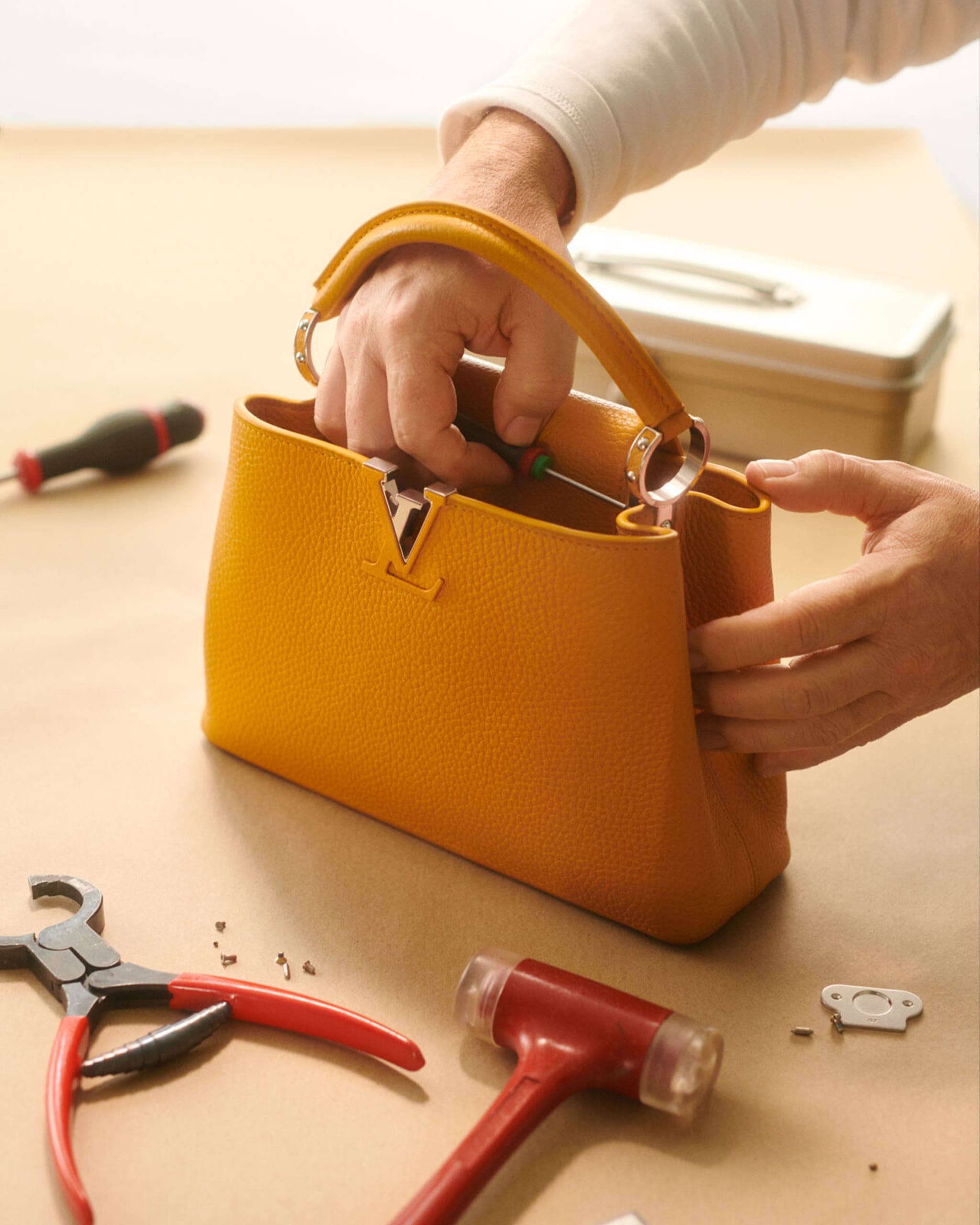Courtesy of Louis Vuitton
The restoration revolution is extending the life of our beloved luxury purchases.
The definition of luxury has often denoted sartorial masterpieces of exceptional quality, rarity, and artistry. But with the climate crisis prompting buyers to become more aware of their consumption patterns, the concept of sustainability has become an integral part of the high fashion lexicon as well.
It can however be said that storied houses have to a certain extent long been proponents of sustainability, albeit by way of crafting pieces so well-made they last for years, and can withstand the intervention of repairs. They may cost a pretty penny, but knowing that your designer purchase has a longer lifecycle does give some merit to the common rationalization “cost per wear.”
Louis Vuitton has historically been keen on mindful mending, with the first ever recorded restoration dating back to 1860. According to the brand, repair is a noble word that has always been integral to their DNA: “Clients are at the heart of the Maison, therefore enabling the preservation of a Louis Vuitton creation ensures a continued client journey, securing transmission from generation to generation.”
As much as 600,000 of Louis Vuitton’s products, from newer acquisitions to historic trunks, are revitalized each year. This is done either at their 12 regional Repair Ateliers, in their stores for minor touch-ups, or through their global network of artisans.
Given the meticulous attention to detail needed to address luxury pieces, a lot of houses do offer some level of aftercare service. Some brands like Bottega Veneta, however, have taken it up a notch, offering what is essentially a lifetime warranty for products purchased after their Certificate of Craft program was launched.
“The Certificate of Craft is born out of a desire to offer our clients a superior service of long-term preservation of their products,” says Bottega Veneta CEO Leo Rongone in a statement, adding that they offer unlimited complimentary refreshes and repairs on their handbags.


Another label keen on keeping their items in useful circulation is Hermès, whose artisans have for years rejuvenated not only the label’s handbags, but their jewelry, clothing and home items as well. In a conversation with Vogue, current artistic director Pierre-Alexis Dumas (a descendant of founder Thierry Hermès) talks about humanity’s relationship with nature and how brands must innovate and adapt.
“Inspiration is in nature. Nature is the great provider of everything. And we fool ourselves if we believe that we can build great civilizations independently of nature, because nature actually constitutes us,” he says. “Today we have to work with nature. We have to know exactly what is the impact of what we do. We have to reuse the materials. And if we can, we have to repair them.”
It is a sentiment that he says has long been a part of the brand’s ethos. “I remember my grandfather telling me as a kid, I heard him tell me, literally, that “luxury is that which you can repair,” he continues.
Another French brand keen on preserving their creations is Chanel, whose Chanel et moi program offers a five-year guarantee for their handbags and wallets on chain purchased April 2021 onward. And while not part of the warranty, some pieces acquired prior to this date can likewise be given a new lease on life by the brand.
With more consumers concerned about reducing their carbon footprint and paying more attention to sustainability, these repair programs can be a boon. And, to be able to turn well-considered fashion pieces into cherished heirlooms, glistening with distinguished patina from a life well-lived is a luxury in itself.
